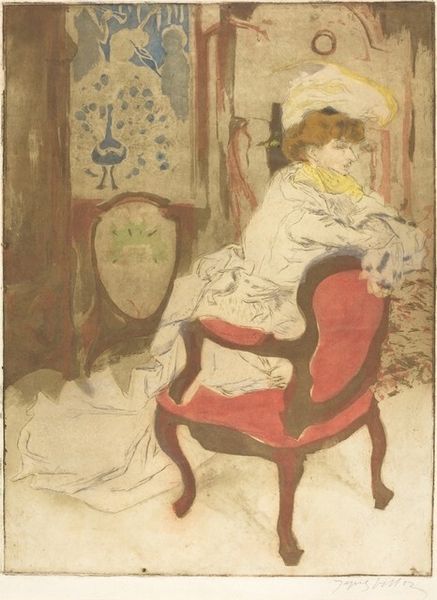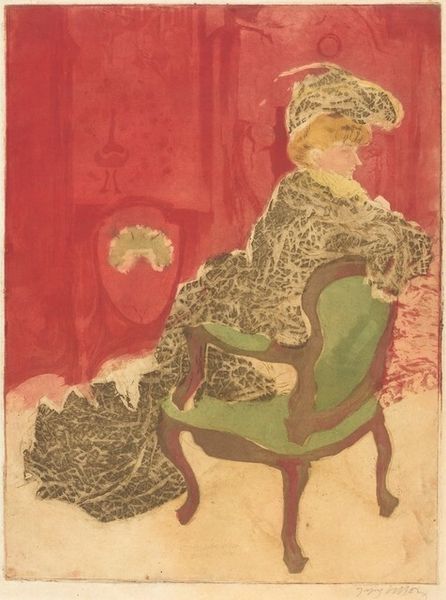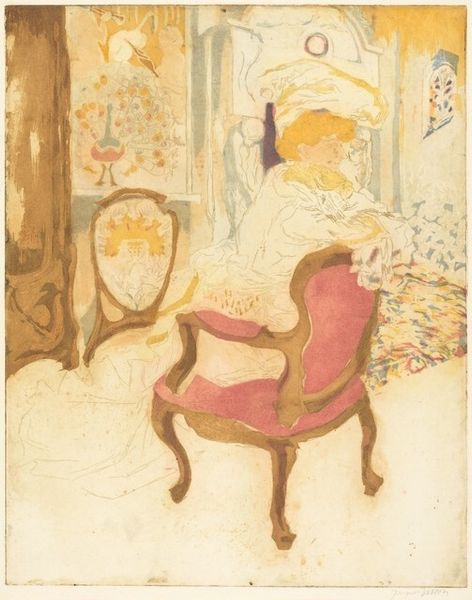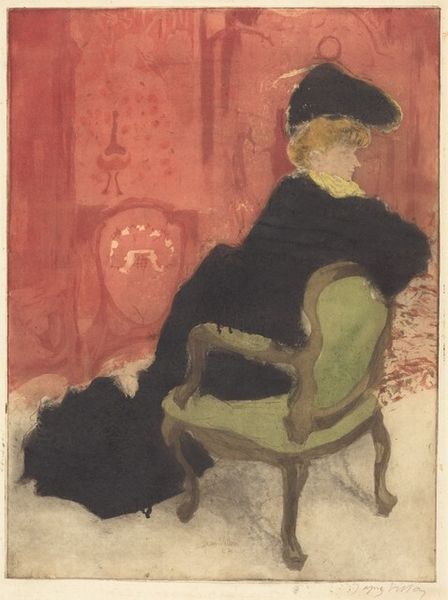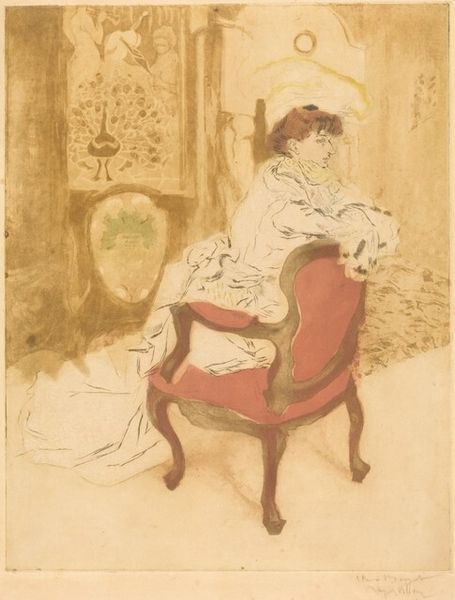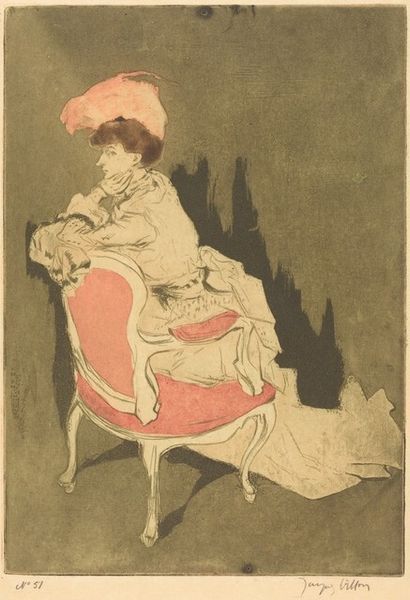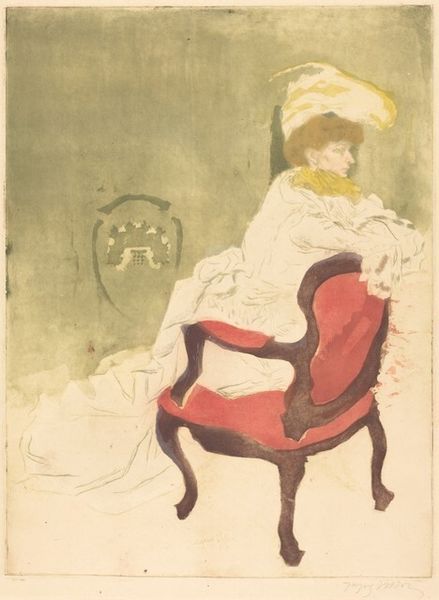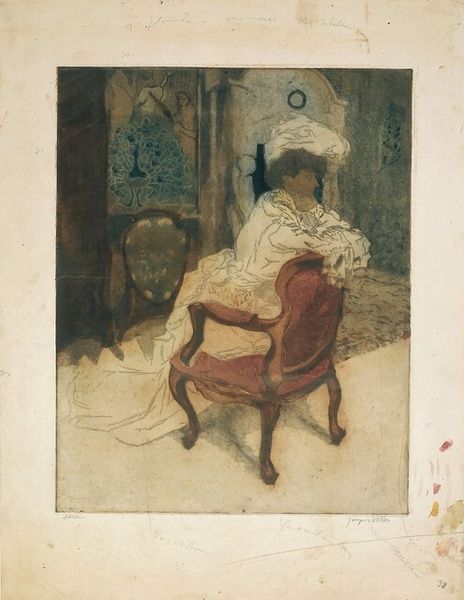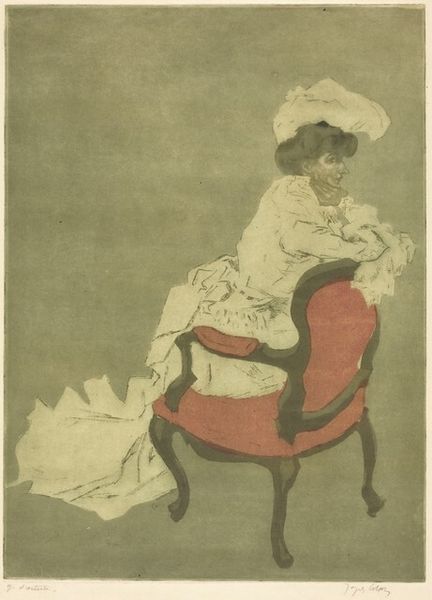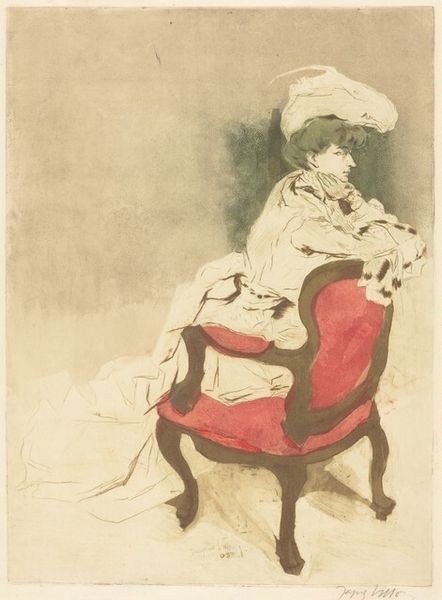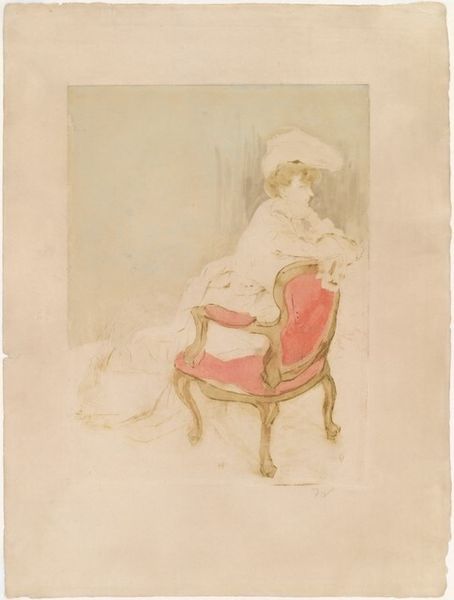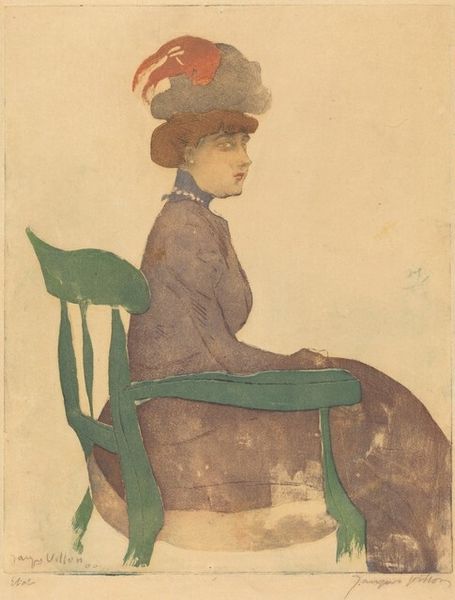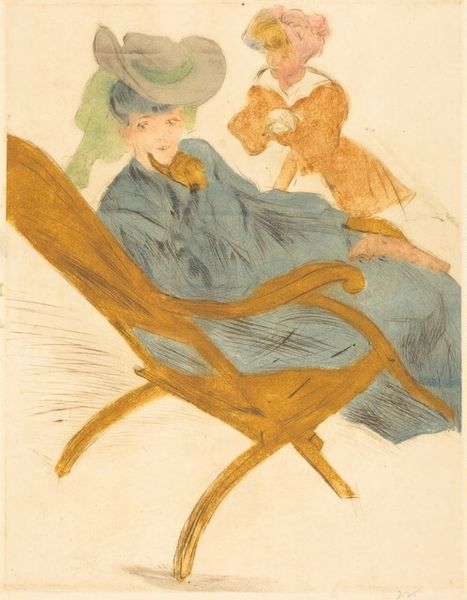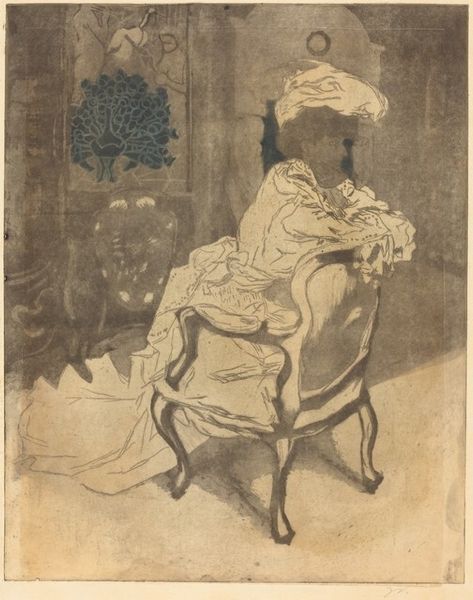
Dimensions: plate: 45 x 33.9 cm (17 11/16 x 13 3/8 in.) sheet: 60.5 x 49.1 cm (23 13/16 x 19 5/16 in.)
Copyright: National Gallery of Art: CC0 1.0
Curator: Here we have Jacques Villon’s "La Parisienne (11)," created around 1902. Villon, while less known than his brothers Marcel Duchamp and Raymond Duchamp-Villon, was a prominent printmaker. He executed this piece using watercolor, a medium perfectly suited to the soft intimism he evokes here. Editor: My first impression is of delicate transience, as if the subject might evaporate with a sigh. The overall muted palette is punctuated only by the bright vermillion of the chair, creating a stark contrast, visually drawing you in. Curator: Precisely. Beyond its visual allure, the piece acts as a portal, beckoning viewers into the drawing rooms of turn-of-the-century Paris. This was a period of rapid social transformation, where women—particularly the Parisian woman—were negotiating spaces between traditional expectations and modern aspirations. Her posture—leaning back, but not quite relaxed—hints at that tension. Editor: I'm struck by how the linear composition—the flow of her dress, the angles of the chair—guides our gaze around the image, creating a sense of contained movement. There's a dynamism beneath the stillness. What do you make of the background elements, seemingly wallpaper, but also ambiguous and vaguely decorative? Curator: Ah, that backdrop situates her further into an intimate domestic sphere, but even then, it's subtly disrupted with what seems to be heraldic imagery and what even might be a flock of flying birds at the top, introducing suggestions of lineage and the outdoors into that otherwise controlled interiority. The contrast reminds me of a statement by Baudrillard when he discussed feminine seduction as the triumph of surface over depth, a concept quite applicable here. Editor: I agree; it’s not just decorative, it serves as an anchor for interpretation. Looking closer, you see Villon’s masterful understanding of color relationships – the subtle shifts in the green that bring depth, almost a shimmering effect across the wallpaper, while creating just the right ambiance for this fashionable figure. Curator: Examining the piece through the lens of social history enhances the art historical context, enriching one's understanding beyond pure aesthetic enjoyment. It reminds us how deeply the language of painting encodes both private struggles and public shifts. Editor: Yes, while the sociohistorical provides one layer, considering Villon’s structural use of watercolor adds dimension as well, doesn’t it? It leaves you with a sense of poised quietude. Curator: It’s always enriching to see those multiple dimensions co-exist! Editor: Absolutely. It’s through that dialogue between form and content that the essence of the piece is truly felt.
Comments
No comments
Be the first to comment and join the conversation on the ultimate creative platform.
